Greenwood Road Books
Your leading source for interesting books
Libri ad legendum non metus
1. Ed has worked for a diverse variety of organizations and institutions. Which has never employed Ed?
a) Chicago Botanic Garden
b) Field Museum of Natural History
c) Geochron Laboratories
d) l’Organisation européenne pour la recherche nucléaire (CERN)
e) Standard T Chemical Company
f) Superconducting Super Collider
g) United Nations Office at Geneva
h) Wei T’o Associates
i) Woods Hole Oceanographic Institution. 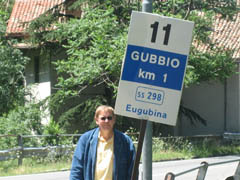
2. At one point, Ed was flying to Europe at least once a month. Which country’s border control has never stamped his passport?
a) Andorra
b) Australia
c) Austria
d) Denmark
e) Estonia
f) Fiji
g) Finland
h) Italy
i) Latvia
j) Liberia
k) Lithuania
l) Moldova
n) New Zealand
o) Norway
p) Poland
q) Romania
r) Slovakia
s) Spain
t) Sweden
u) Switzerland
v) Syria
w) Thailand
x) Trinidad
y) Turkey
z) Union of Soviet Socialist Republics.

3. Ed was a member of the Professional Board of the International Federation of Library Associations and Institutions (IFLA), requiring frequent visits to the IFLA’s headquarters in the Hague in the Netherlands. In which Dutch city did Ed prefer to stay during these trips?
a) Amsterdam
b) Baarn
c) Delft
d) Eindhoven
e) Groningen
f) Haarlem
g) Harderwijk
h) Leiden
i) Maastricht
j) Utrecht.
4. The first fossil that Ed ever found was a:
a) brachiopod
b) bryozoan
c) cephalopod
d) coprolite
e) crinoid
f) dinosaur
g) gastropod
h) holothurian
i) pelecypod
j) trilobite. 
5. In the kitchen, Ed concocts meals based on his experiences. Which of the following has he never created?
a) bread pudding
b) chili
c) czernina
d) gumbo
e) pancakes
f) quiche.
6. While in high school, Ed was an editor for the weekly school newspaper. It was entitled the:
a) Advance
b) Bagpipe
c) Chronicle
d) Clarion
e) Communicator
f) Gazette
g) Standard
h) Tattler
i) Times
j) Tribune.
7. Ed’s grandfather emigrated over a century ago from which Lithuanian metropolis?
a) Kaunas
b) Klaipeda
c) Palanga
d) Plungė
e) Šiauliai
f) Vilnius.
8. For all of his geological interests, Ed has climbed to the summit of only one mountain, after the conclusion of the Geological Society of America Penrose Conference in June 1975. That unfortunate peak was:
c) Mount Conness
b) Mount Dana
f) Mount Darwin
a) Mount Patterson
d) Mount Tom
e) Mount Whitney. 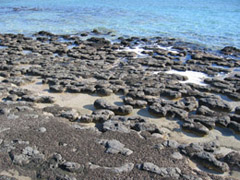
9. The oldest fossil in Ed’s collection is a (or an):
a) arachnid
b) belemnite
c) brachiopod
d) cephalopod
e) coccolithophorid
f) crinoid
g) cystoid
h) eurypterid
i) foraminifera
j) gastropod
k) holothurian
l) marsupial
m) ostracod
n) pelecypod
o) placoderm
p) stromatolite
q) trilobite
r) zoophyte.
10. At concerts in Mandel Hall at the University of Chicago in the 1970s, which pianist tuned the stage piano (to the amazement of Ed and the audience)?:
a) Claudio Arrau
b) Vladimir Ashkenazy
c) Paul Badura-Skoda
d) Victor Borge
e) Robert Casadesus
f) Misha Dichter
g) Philippe Entremont
h) Leon Fleisher
i) Emil Gilels
j) Hélène Grimaud
k) Otis Spann
l) Mitsuko Uchida. 
11. Lorna Donley was one of Ed’s best students. Fortunately for Lorna, she is better known for her important role in the 2007 film You weren’t there: A history of Chicago punk, 1977–1984 and as the co-founder of:
a) DA!
b) Dalek I Love You
c) Department S
d) Desperate Bicycles
e) Devo
f) Dream Syndicate.
12. Ed’s first apartment (all of 280 square feet) was in Chicago’s Hyde Park at:
a) 5640 South Ellis Avenue
b) 1155 East 58th Street
c) 5757 South University Avenue
d) 1313 East 60th Street
e) 5330 South Blackstone Avenue
f) 1501 East 57th Street.
13. Over three decades passed before Ed finally secured a driver’s license and operated an automobile. His first car was a (or an):
a) Aston Martin DB5
b) Citroën CX
c) Fiat X1/9
d) Ford Edsel Corsair
e) Ford Galaxy 500
f) Jaguar XK–150
g) Lada Niva
h) Lotus Europa
i) Mercury Monterey
j) Peugeot 505
k) Renault Caravelle
l) Studebaker Starlight
m) Trabant 601
n) Volkswagen Karmann Ghia
o) Volga GAZ 21
p) Volvo P1800.
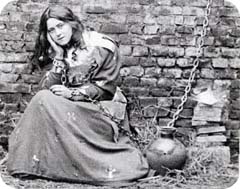
14. Ed’s favorite saint is:
a) Saint Athanasius
b) Saint Augustine
c) Saint Casimir
d) Saint Charitina
e) Saint Dymphna
f) Saint Jerome
g) Saint Scholastica
h) Saint Stanislaus
i) Saint Thecla
j) Saint Thérèse de Lisieux.
15. Ed participated as a student in two of the Geological Society of America’s Penrose Conferences, in Mammoth Lakes, California, and Florissant, Colorado. The Florissant meeting focused on:
a) Cretaceous climates
b) Google Earth
c) History of the Earth sciences
d) Iapetus Ocean
e) Late Eocene Earth
f) Temporal scales in paleoecology.
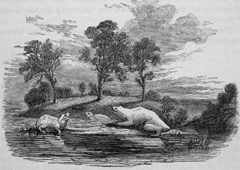
16. As a near eternal undergraduate and graduate student (starting in 1968, ending eventually in 1984), Ed was often compared to:
a) Anton Chekhov’s Trofimov
c) Fyodor Dostoyevsky’s Rodion Raskolnikov
d) Haruki Murakami’s Toru
b) Roger Zelazny’s Fred Cassidy.
17. During his career as a near eternal undergraduate and graduate student, Ed had many odd jobs to pay for tuition and books, books, and more books. Ed never received a salary to be a:
a) deburrer and occasional punch press operator on the graveyard shift
b) dishwasher in an Italian restuarant
c) janitor in a roller rink
d) mail labeler for the magazine Needlepoint News
e) mineral separator for K/Ar dating
f) short-order cook at an all-night diner
g) technician in a laboratory of a paint factory. 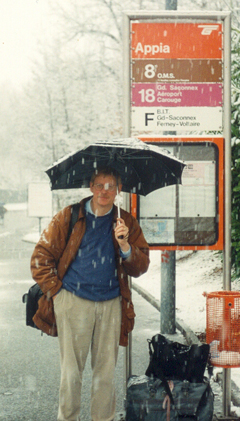
18. Greenwood Road Books is named after Ed’s childhood street. Which rue did not feature an abode for Ed?
a) Blanchan Avenue
b) Carlisle Street
c) Chester Street
d) Ellery Street
e) Margaret Street
f) Oakley Avenue
g) Quai des Forces-Motrices.
19. Every September 22, Ed re-reads:
- Derek Ager’s Principles of paleoecology
- Roy Chapman Andrews’ All about dinosaurs
- Isaac Asimov’s Pebble in the sky
- Margaret Atwood’s Stone mattress
- Julian Barnes’ The sense of an ending
- Edward Berry’s The flora of the Ripley formation
- Robert Bowen’s Paleotemperature analysis
- Hermann Broch’s The sleepwalkers
- Elisabeth Brouwers’ Systematic paleontology of Quaternary
ostracode assemblages from the Gulf of Alaska
- Charles Bukowski’s Post office
- Albert Camus’ Le mythe de Sisyphe
- Karel Čapek’s War with the newts
- Tracy Chevalier’s Remarkable creatures
- Susan Cooper’s The dark is rising
- Philip K. Dick’s Do androids dream of electric sheep?
- Fyodor Dostoyevsky’s The idiot
- Umberto Eco’s The name of the rose
- Enrico Fermi’s Elementary particles
- Laura Fermi’s Atoms in the family
- Martin Gardner’s The flight of Peter Fromm
- George Gamow’s Mr. Tompkins in wonderland
- Ričardas Gavelis’ Vilnius poker
- Allen Ginsberg’s Howl
- Nikolai Gogol’s The nose
- A. Hallam’s Jurassic environments
- Hermann Hesse’s The glass bead game
- Peter Høeg’s Borderliners
- Homer’s Ὀδύσσεια
- Aldous Huxley’s The doors of perception
- Thomas Henry Huxley’s On a piece of chalk
- Franz Kafka’s The metamorphosis
- Harnett T. Kane’s The bayous of Louisiana
- William Kaufman and Mary Ursula Cooper’s The art of Creole cookery
- Zofia Kielan-Jaworowska’s Hunting for dinosaurs
- Björn Kurtén’s The age of dinosaurs
- Joseph Le Conte’s Elements of geology
- Ursula LeGuin’s Searoad: Chronicles of Klatsand
- Riccardo Levi-Setti’s Trilobites: A photographic atlas
- C.S. Lewis’ The chronicles of Narnia
- Willy Ley’s Dragons in amber: Further adventures
of a romantic naturalist
- Alfred Loomis’ Fair winds in the far Baltic
- Heinz Lowenstam’s Biostratigraphic studies of the Niagaran
inter-reef formations in northeastern Illinois
- Marie Françoise-Thérèse Martin’s Story of a soul
- François Matthes’ Geologic history of the Yosemite valley
- John McPhee’s Basin and range
- H.W. Menard’s The ocean of truth
- Thomas Merton’s Seven storey mountain
- A.E.M. Nairn’s Descriptive palaeoclimatology
- Bragi Ólafsson’s The ambassador
- Michael Ondaatje’s Coming through slaughter
- George Orwell’s Down and out in Paris and London
- Boris Pasternak’s Doctor Zhivago
- Arturo Pérez-Reverte’s The Club Dumas
- Robert Pirsig’s Zen and the art of motorcycle maintenance
- H. C. Robbins Landon’s 1791: Mozart’s last year
- E. Scumas Rory’s Dancing worm of Turkana
- Ruta Sepetys’ Salt to the sea
- Hervey Woodburn Shimer and Robert Rakes Shrock’s Index fossils of North America
- Upton Sinclair’s The jungle
- Isaac Bashevis Singer’s The king of the fields
- Alexander McCall Smith’s 2½ pillars of wisdom
- Allan Stevenson’s The problem of the Missale Speciale
- Harald Stümpke’s The snouters: Form and life of the rhinogrades
- Leo Szilard’s The voice of the dolphins, and other stories
- Blair Tindall’s Mozart in the jungle
- J.R.R. Tolkien’s The lord of the rings
- Harold Urey’s The planets, their origin and development
- Jules Verne’s Twenty thousand leagues under the sea
- Voltaire’s Candide, ou l’Optimisme
- Bruce Wade’s The fauna of the Ripley Formation on Coon Creek, Tennessee
- Diane Wakoski’s Greed
- James Watson’s The double helix
- Simone Weil’s Notebooks
- Stuart Weller’s The paleontology of the Niagaran limestone in the Chicago area
- Elizabeth Wilson’s Shostakovich: A life remembered
- Ellis Yochelson’s Charles Doolittle Walcott, paleontologist
- Rainer Zangerl and Eugene Richardson’s The paleoecological history of two Pennsylvanian black shales.
20. For years, there was some confusion over Ed’s birth date (especially for Ed with several different dates appearing on school records). According to official documents, uncovered by authorities in 1980, it was discovered to be at 10:24am at the University of Chicago’s Lying-In Hospital (at 5841 South Maryland Avenue) on:
a) October 1
b) October 3
c) October 6
d) October 22
e) October 27
f) October 31. 
21. On occasion, Ed dragged a thermos filled with coffee to his grammar school, St. Mary’s, to help him survive each school day. Not any ordinary coffee, but a New Orleans coffee and chicory blend. His teachers, Sisters of Christian Charity, tolerated his addiction but warned him that his repeated coffee & chicory consumption might stunt his growth. Ed still requires at least one large cup of which coffee to start his day and continue to stunt his growth:
a) Cafe Du Monde Coffee with Chicory
b) CDM Dark Roast Coffee & Chicory
c) Community Coffee with Chicory
d) French Market Coffee & Chicory City Roast
e) Luzianne Dark Roast Coffee & Chicory.
22. Ed’s least favorite opera is:
a) John Adams’ Doctor Atomic
b) Philip Glass’ Einstein on the Beach
c) Leoš Janáček’s The Excursions of Mr. Brouček to the Moon and to the 15th Century
d) Olivier Messiaen’s Saint François d’Assise
e) Wolfgang Amadeus Mozart’s Die Zauberflöte
f) Krzysztof Penderecki’s Die Teufel von Loudun
g) Francis Poulenc’s Dialogues des Carmélites
h) Dmitri Shostakovich’s The Nose
i) Any composition by Richard Wagner, but especially Der Ring des Nibelungen.
23. Ed’s favorite symphony is:
a) Dmitri Shostakovich’s Symphony No. 4 in C minor, Opus 43
b) Dmitri Shostakovich’s Symphony No. 5 in D minor, Opus 47
c) Dmitri Shostakovich’s Symphony No. 7 in C major, Opus 60
d) Dmitri Shostakovich’s Symphony No. 10 in E minor, Opus 93
e) Dmitri Shostakovich’s Symphony No. 11 in G minor, Opus 103
f) Dmitri Shostakovich’s Symphony No. 13 in B-flat minor, Opus 113. 
24. Ed was instructed to leave a certain Cambridge, Mass. piano practice room after his repeated failures at playing a very simple transcription of the:
a) Second movement in C minor, of Beethoven’s Symphony No. 3 in E-flat major, Opus 55
b) Second movement in A major, of Beethoven’s Symphony No. 5 in C minor, Opus 67
c) Second movement in A minor, of Beethoven’s Symphony No. 7 in A major, Opus 92
d) Second movement in B-flat major, of Beethoven’s Symphony No. 8 in F Major, Opus 93
e) Second movement in D minor, of Beethoven’s Symphony No. 9 in D minor, Opus 125. 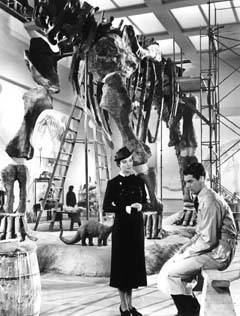
25. Ed would often visit the sadly extinct Orson Welles Theatre on Massachusetts Avenue, at the corner of Ellery Street, in Cambridge, Mass. to see many movies. He was not removed from this cinema even though he had not memorized dialogues from famous scenes. His favorite movie is:
a) Adventures of Buckaroo Banzai Across the 8th Dimension (1984)
b) Adventures of Robin Hood (1938)
c) Alexander Nevsky (1938)
d) Alphaville (1965)
e) L’Atalante (1934)
f) Belles of St. Trinian’s (1954)
g) Blue Murder at St. Trinian’s (1957)
h) Brazil (1985)
i) Bringing Up Baby (1938)
j) Canterbury Tale (1944)
k) Casablanca (1942)
l) Curious Case of Benjamin Button (2008)
m) Desk Set (1957)
n) Destroy All Monsters (1969)
o) Dish (2000)
p) Doctor Zhivago (1965)
q) For All Mankind (1989)
r) Foreign Correspondent (1940)
s) Godzilla (1954)
t) Hiroshima Mon Amour (1959)
u) Hunchback of Notre Dame (1939)
v) I Know Where I’m Going! (1945)
w) Inquiring Nuns (1969)
x) Koyaanisqatsi (1982)
y) Krylya (Wings) (1966)
z) Last Wave (1977)
aa) Madame Curie (1943)
bb) Magic Christian (1969)
cc) Medium Cool (1969)
dd) Moonrise Kingdom (2012)
ee) Night at the Opera (1935)
ff) Nineteen Eighty-Four (1984)
gg) October Sky (1999)
hh) On the Beach (1959)
ii) Petrified Forest (1936)
jj) Pokolenie (A Generation) (1955)
kk) Pure Hell of St. Trinian’s (1960)
ll) Solaris (1972)
mm) Steamboat Round the Bend (1935)
nn) Third Man (1949)
oo) Time Bandits (1981)
pp) To Be or Not to Be (1942)
qq) Turning Point (1977)
rr) Valley of Gwangi (1969). 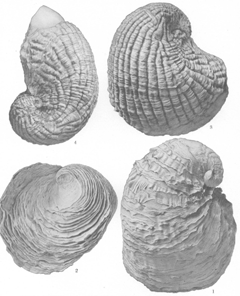
26. Science fairs were very important to Ed in high school. His projects had arcane titles, but of course; which title was not employed in his adventures in Illinois Junior Academy of Science expositions between 1964 and 1968:
a) Bios in stone
b) Cretaceous (Selma) coccoliths and associated nannofossils of Mississippi
c) Evolution of the Cretaceous genus Exogyra of Mississippi
d) Geology of the United States
e) Paleontology of an Eocene outcrop at Montgomery, Louisiana.
27. Ed’s first complete sentence en français, vocalized in Bretagne and actually understood by a native, was:
a) “Est-ce là Jules Verne vie?”
b) “Est-ce la maison de Saint Thérèse?”
c) “Est ce vin de Loire?”
d) “Il y a un magasin sur Île Saint-Louis avec beaucoup de trilobites fines.”
e) “Je ne bois pas Coca-Cola.”
f) “Je participe toujours à la première messe le dimanche à Notre Dame.”
g) “Mon grand-père a immigré de Lituanie.”
h) “Où est mon douzième huître, s’il vous plaît?”
i) “Quand le début de concert d’orgue?”
j) “Simone Weil était pas communiste, mais un saint.”
k) “Sont des fossiles trouvés dans ces affleurements?” 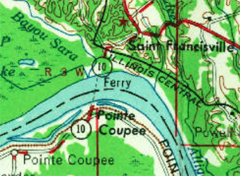
28. Nothing like taking a slow trip across the Mississippi River on a ferry. Ed’s favorite in Louisiana was always on the:
a) Angola Ferry;
b) Belle Chasse — Scarsdale Ferry;
c) Canal Street — Algiers Ferry;
d) New Roads — St. Francisville Ferry;
e) Plaquemine Ferry;
f) Pointe à la Hache Ferry.
29. You could always find this inexpensive Chicago beer in the refrigerator at Ed’s childhood home on Greenwood Road, purchased at four quarts for a dollar (plus deposit). This brew was aptly called:
a) Hamm’s;
b) Jax;
c) Old Style;
d) Olde English 800;
e) Pearl;
f) Prima;
g) Schlitz;
h) Schmidt.
30. “She sells sea shells by the sea shore. So if she sells shells on the seashore, I’m sure she sells seashore shells.” Ed collected his first modern marine molluscan remains at which locale?
a) Great Point beach, Nantucket, Massachusetts;
b) Hanalei Bay, Kauai, Hawaii;
c) Manasota Key, Charlotte County, Florida;
d) Nobska Point beach, Woods Hole, Massachusetts;
e) Schooner Beach, Yakutat, Alaska;
f) Shell Island, Plaquemines Parish, Louisiana. 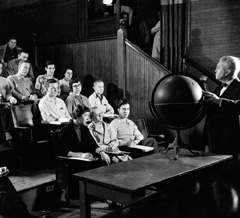
31. Ed’s teaching career started innocently as an impromptu graduate teaching assistant in the Department of the Geophysical Sciences at the University of Chicago. He was a last-second substitute, replacing the incomparable Teresa Bone, in a required course designed for undergraduate non-science majors. Those unfortunate students, pauvres petits chagrins! The lecturer for this course many long decades ago was:
a) Thomas Chrowder Chamberlin;
b) Cesare Emiliani;
c) Enrico Fermi;
d) James Hopson;
e) Heinz Lowenstam;
f) David Raup;
g) Alfred Sherwood Romer;
h) E. Scumas Rory;
i) Rollin D. Salisbury;
j) Thomas J.M. Schopf;
k) Leo Szilard;
l) Edward Teller;
m) Harold Urey;
n) Leigh Van Valen;
o) Stuart Weller;
p) Samuel Wendell Williston. 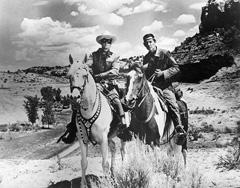
32. Given Ed’s fascination with fossils and all things on the ground, it’s not surprising that he often tripped over his own big feet in his eternal search for the next big prehistoric thing. His lack of coordination led to many ripped clothes in his school wardrobe. In frustration, he eventually was forced to wear jodhpurs in his high-school senior year for a number of weeks. Which of these memorable quips were directed by students and teachers in his direction during that jodhpurs phase:
a) “Where’s your horse?”
b) “How’s Tonto?”
c) “Hey kemosabe!”
d) “Do they itch?”
e) “Has the circus arrived?”
f) “I bet your girl’s impressed by those.”
g) “Silly, wear cowboy boots next time, not penny loafers!”
h) “Gee, more fashion ideas from GQ again!”
i) All of the above.
33. The one ingredient that you’ll never find in Ed’s gumbo:
a) andouille;
b) celery;
c) fish stock;
d) okra;
e) oysters;
f) roux;
g) shrimp;
h) tomatoes.
34. Mea culpa, mea culpa, mea maxima culpa. Ed could remember the scientific names of hundreds of extinct organisms, but not basic Church Latin. Hence, much to Ed’s unease, Ed’s father and brother on occasion jointly served at the Sunday low mass as:
a) altar boys;
b) choristers;
c) confessors;
d) deacons;
e) greeters;
f) organists. 
35. On some Sundays, Ed and his brother would be allowed to purchase a comic book or two at a local drug store. However, they were banned from ever selecting comics featuring a certain character. Zeichenverbotenes! This fictional being was:
a) Batwoman;
b) Catwoman;
c) Flash;
d) Green Lantern;
e) Lois Lane;
f) Supergirl;
g) Wonder Woman.
36. Between Buras and Triumph in Plaquemines Parish, Louisiana, Croatian immigrants created quite a special local liquid delicacy, which Ed as a youngster enjoyed on some festive occasions. No longer available, it was:
a) absinthe;
b) creole beer;
c) ginger beer;
d) lemonade;
e) orange wine;
f) sassafras mead. 
37. Ferris Bueller would never have consorted with Ed on his day off. None of Ed’s classmates in high school believed that he cut classes in the middle of the school year to:
a) collect fossils in the nearest quarry to add to his science project;
b) construct his science fair project, with peg boards, display lettering, and, of course, fossils;
c) consult with paleontologists on taxonomic details of his specimens;
d) see the latest Godzilla ((ゴジラ) movie, a character featured in one of his science projects;
e) sneak on a field trip to the Appalachians, for additional specimens for his science project;
f) visit the Library at the Field Museum to read paleontological literature for his science project.
38. There are over 100 radio telescopes in the world. The only one that Ed has ever visited was the:
a) Goldstone Radio Telescope, Mojave Desert California;
b) Green Bank Telescope, West Virginia;
c) Lovell Telescope, Jodrell Bank Observatory, England;
d) Mount Pleasant Radio Telescope, Hobart, Tasmania;
e) Murchison Widefield Array, Western Australia;
f) Parkes Radio Telescope, New South Wales, Australia.
39. Many scientists have argued for the start of the Anthropocene (or as Donna Haraway labeled it, the Chthulucene) in the year 1950. Which of the following markers was not used by Working Group on the ‘Anthropocene’ to distinguish this proposed geological unit:
a) abundance of ‘technofossils’ or debris made from cement, plastics, and certain metals;
b) birth of Ed;
c) drop in stable isotope 13C in organic matter due to an excess use of fossil carbon (rich in 12C);
d) enormous increase in extinction rates of a variety of species;
e) radionuclides in the environment from the Trinity and other nuclear tests;
f) widespread global accumulation of the remains of domestic chicken as a future fossil marker. 
40. Ed’s mother was raised in Irondale and Ed’s father worked in Slag Valley. It’s not surprising that everything (even Ed) was covered in red flue dust, that is, pulverized iron drifting away from blast furnaces. Irondale and Slag Valley are neighborhoods in Chicago in an area near the polluted shores of Lake Calumet known as:
a) Bronzeville;
b) Chatham;
c) Hegewisch;
d) Kenwood;
e) Lawndale;
f) Pullman;
g) Roseland;
h) South Deering;
i) Stony Island;
j) West Pullman.
41. Ed’s godfather, William, was a barber, with his own shop on Michigan Avenue in a neighborhood on the far south side of Chicago known as Roseland. Newspapers, magazines, and books in the barber shop were not in English, much to Ed’s childish bewilderment and amusement. The only language spoken — while in a chair for a serious cut — was:
a) Croatian;
b) Dutch;
c) Estonian;
d) Frisian;
e) Latin;
f) Latvian;
g) Lithuanian;
h) Polish;
i) Quenya;
j) Russian;
k) Samogitian;
l) Serbian;
m) Vulcan;
n) Yiddish.
42. Glissading, ah, the only way to take advantage of gravity, a glacier, and a mountain. The only tool that Ed used as a glissader in the High Sierra was a (or an):
a) avalanche beacon;
b) carabiner;
c) crashpad;
d) ice axe;
e) ice pick;
f) snow peg;
g) snow shovel. 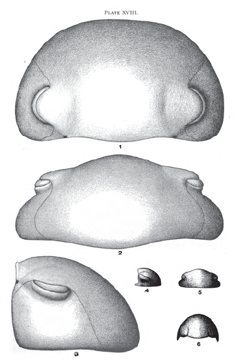
43. Collecting trilobites at the Brown Derby just west of the Thornton, Illinois main quarry was always a treat. Ed’s favorite Silurian trilobite, according to Stuart Weller’s (1907) taxonomy, is:
a) Arctinurus occidentals;
b) Bronteus acamas;
c) Calymene niagarensis;
d) Ceraurus hydei;
e) Dalmanites platycaudatus;
f) Encrinurus egani;
g) Harpes telleri;
h) Illaenus niagarensis;
i) Odontopleura illinoiensis;
j) Phacops handwerki.
44. Working six nights a week in a steel pipe factory as a deburrer and punch press operator on the Midnight to eight a.m. shift left little time for fossil collecting. The sounds of the punch presses hammering on metal in rhythm reminded Ed of Igor Stravinsky’s Le Sacre du Printemps, but wisely he never shared that observation with his early morning colleagues. Everyone on the factory floor had nicknames; Ed’s nickname was:
a) Cocoa;
b) Ox;
c) Pepper;
d) Piggy;
e) Thor;
f) Viking.
45. The aforementioned factory work eventually led to a case of pneumonia, so severe that Ed left the Midnight shift for good. Before he took on yet another odd job, he attended the Symposium on Cosmochemistry at Smithsonian Astrophysical Observatory on Garden Street in Cambridge, Mass. He returned to Cambridge less than a year later, after working as a:
a) dishwasher at Caesar’s It’s Italian restaurant in Harvey, Illinois;
b) janitor at Art’s Roller Rink in Harvey, Illinois;
c) sanitation engineer for the city of Harvey, Illinois;
d) stringer for the Harvey (Illinois) Tribune;
e) substitute teacher at Thornton High School in Harvey, Illinois;
f) ticket agent for the Illinois Central Railroad at the Harvey, Illinois station.
46. Do you know the consequences of riding a passenger train without tickets? Ed, and his brother and sister, discovered what happens to children riding the rails without proper documentation (Hint: They weren’t kicked off the train in the middle of nowhere). Their adventure occurred on the Illinois Central’s famous:
a) City of Miami;
b) City of New Orleans;
c) Green Diamond;
d) Illini;
e) Panama Limited;
f) Saluki;
g) Shawnee. 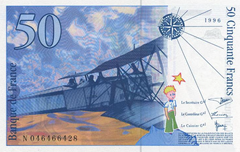
47. Hundreds of pennies, many dimes and quarters, and even dollar bills have been found by Ed in the course of keeping his eyes open for fossils on walks and hikes. He always thanks his father for these riches as a form of delayed inheritance (as in picking up a penny and stating “Thank you, dad.”) The most money that Ed ever found on a street was:
a) Fifty Swiss francs on Quai des Forces Motrices in Genève;
b) Five hundred French francs in Parc Jourdan, Avenue Anatole France, in Aix en Provence;
c) One hundred Soviet rubles on the Avenue of the 25th of October in Leningrad;
d) One thousand Moldovan leu on Stefan cel Mare in Chișinău;
e) Thirty Latvian latu on Brīvības iela in Riga;
f) Twenty Lithuanian litas on Gedimino prospektas in Vilnius.
48. Camping in the Appalachians means always a chance to encounter unexpected guests. The most surprising visitor one evening was Ursus americanus in:
a) Barkcamp State Park, Belmont, Ohio;
b) Blackwater Falls State Park, Davis, West Virginia;
c) Douthat State Park, Millboro, Virginia;
d) Great Smoky Mountains National Park, Gatlinburg, Tennessee;
e) North Bend State Park, Cairo, West Virginia;
f) Pinnacle Rock State Park, Bluefield, West Virginia;
g) Shenandoah National Park, Luray, Virginia.
49. Good behavior at the very first Sunday mass at St. Louis Cathedral in New Orleans as a child was always rewarded with:
a) Beignets and coffee at Cafe du Monde;
b) Boudin cakes at Arnaud’s;
c) Oysters at Acme Oyster House;
d) Pork belly at Commander’s Palace;
e) Sausage omelette and grits at the Camellia Grill;
f) Seafood and shrimp creole omelette at the Court of Two Sisters.
50. Ed was an emergency pallbearer as a youngster for his maternal grandfather at St. Kevin’s Catholic Church on south Torrence Avenue in the shadows of the mills, deep in the south side of Chicago. There was a police presence at that funeral because of centuries-old ethnic differences that could flare up in the neighborhood between:
a) Albanians and Macedonians;
b) Athenians and Spartans;
c) Aukštaitians and Žemaitijans;
d) Bosniaks and Croatians;
e) Croatians and Serbians;
f) Elves and Orcs;
g) Karelians and Russians;
h) Lithuanians and Poles;
i) Moldovans and Ukrainians;
j) Palmyrenes and Romans;
k) Pomeranians and Žemaitijans;
l) Themiscyreans and Gorgons;
m) Vulcans and Romulans;
n) Yotvingians and Dzukians.
51. Countless times has Ed boarded an airplane on his way to some distant locale. His first flight as a teen was on a DC-3 operated by a long extinct airline out of Chicago’s Midway airport. A window seat provided a clear view of plenty of clouds and many scheduled stops, before eventually landing at:
a) Denver, Colorado;
b) Detroit, Michigan;
c) Fayetteville, Arkansas;
d) Grand Forks, North Dakota;
e) Marquette, Michigan;
f) New Orleans, Louisiana;
g) Sioux Falls, South Dakota;
h) Sturgeon Bay, Wisconsin;
i) Toronto, Ontario.
52. On his very first journey across the Atlantic, Ed was very excited to rent a car and drive to one of his favorite bookstores. In his eagerness, he failed to notice that the road was narrowing into a very small one-way street. The width of the lane tapered even further, leading to the quick removal of a mirror on the passenger side of his rental. This incident occurred in:
a) Basingstoke, Hampshire;
b) Bridgwater, Somerset;
c) Canterbury, Kent;
d) Chichester, West Sussex;
e) Lewes, Sussex;
f) Macclesfield, Cheshire;
g) Stevenage, Hertfordshire.
53. Collecting Cretaceous ammonites in desiccated Horse Creek west of Hugo, Oklahoma was always risky business in the summer. There were plenty of warning signs, in the form of:
a) bald eagle feathers;
b) black bear scat;
c) bobcat tracks;
d) brown recluse spiders;
e) molted rattlesnake skins;
f) striped bark scorpions.
54. On his first trip to the Black Isle (a peninsula, not an island) in Scotland, Ed made a pilgrimage to the home of the noted self-taught geologist and paleontologist:
a) John Flett (1869–1947);
b) James Hutton (1726–1797);
c) Charles Lyell (1797–1875);
d) William Maclure (1760–1843);
e) Hugh Miller (1802–1856);
f) Roderick Murchison (1792–1871);
g) Thomas Webster (1773–1844). 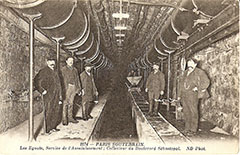
55. The highlight of Ed’s first Thanksgiving in Paris was visiting the delightful:
a) Catacombes;
b) Jardin de l’Observatoire;
c) Musée de la prefecture de police;
d) Musée de Montmartre;
e) Musée des arts forains;
f) Musée des égouts;
g) Muséum national d’Histoire naturelle.
56. On that same Thanksgiving, Ed visited Sainte-Chapelle but was stopped by la sécurité because he was carrying in his backpack a:
a) compass clinometer;
b) ice axe;
c) lightsaber;
d) phaser;
e) rock hammer;
f) stuffed koala bear;
g) trilobite.
57. Speaking of holidays, Ed was part of a very small group of protesters at Chicago’s sole Federal Building on a snowy Christmas eve, a Wednesday evening, in 1969. According to a report in the Christmas day edition of the Chicago Tribune, there were over 600 Chicago police and related security monitoring the activities of less than 100 demonstrators downtown. Ed certainly felt that matters were under control with that ratio of police to “radicals”! In any case, the protests were about the:
a) Chicago Seven trial;
b) Collapse of the Chicago Cubs;
c) First Selective Service lottery;
d) Performance of the Chicago White Sox;
e) Raid on the Black Panthers’ west side headquarters;
f) Vietnam War.
58. Walking in the steps of sauropods and therapods is always a thrill. Ed’s first hint of the size of these tracks was in an exhibit at the American Museum. The best place to see them au naturel is in the:
a) Coon Creek valley, Tennessee;
b) Igloo Creek valley, Alaska;
c) Little Calumet River valley, Illinois;
d) Peace River valley, eastern British Columbia;
e) Paluxy River valley, Texas;
f) South San Gabriel River valley, Texas. 
59. In the middle of the nineteenth century, dinosaur tracks in the Connecticut River valley confused many. The most significant monographs at that time dedicated to solving the mysteries of “Noah’s ravens” were J.C. Warren’s Remarks on some fossil impressions in the sandstone rocks of Connecticut River (1854); James Deane’s Ichnographs from the sandstone of Connecticut River (1861); and, Edward Hitchcock’s Ichnology of New England and Supplement to the Ichnology of New England (1858–1865). Luckily, Ed has been able to find copies of all of these works for his collection. These books are significant for their use of a relatively new technology called:
a) chromolithography;
b) electron microscopy;
c) light solidification;
d) lithography;
e) mass spectroscopy;
f) photography;
g) telegraphy. 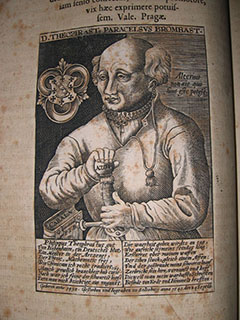
60. Academic obscurantism is so tedious. Ed thinks scholarly obscurants need their own special patron saint. Who would that be? Prayers would be best addressed to:
a) Professor Pierre Aronnax;
b) François-Noël Babeuf;
c) Jean Baudrillard;
d) Johann Bartholomeus Adam Beringer;
e) Nicolas Bourbaki;
f) Sid Caesar;
g) Professor George Edward Challenger;
h) Imogene Coca;
i) Gilles Deleuze;
j) Jacques Derrida;
k) Friedrich Engels;
l) Michel Foucault;
m) Victor Frankenstein;
n) Martin Heidegger;
o) Philippus Aureolus Theophrastus Bombastus von Hohenheim;
p) Moe Howard;
q) Professor Doctor Moritz-Maria von Igelfeld;
r) Thomas Kuhn;
s) Emilio Lizardo;
t) Jean-François Lyotard;
u) Groucho Marx;
v) Karl Marx;
w) Richard McKeon;
x) Karl Popper;
y) Susan Sontag;
z) Hans Zarkov.
Send your answers to books [at] greenwoodroadbooks [dot] com. For those taking this quiz seriously, you will be penalized a funereal fee, with all future purchases charged an additional 50 percent surcharge. In spite of this warning, those answering all questions correctly will receive a coupon for 50 percent off your next order and will be officially licensed as a doppelgänger (sensu Dostoyevsky’s Двойник). Deadline, when modern carbon dioxide levels reach Eocene maximum of 1,400 ppm — Early Eocene Climate Optimum (ECCO) CO2 calculated by Elani Anagnostou, et al., “Changing atmospheric CO2 concentration was the primary driver of early Cenozoic climate,” Nature, volume 533, number 7602 (19 May 2016), pp. 380–384.
© 2011–2017 Greenwood Road Books. All rights reserved. | Questions? Send e–mail to books [at] greenwoodroadbooks [dot] com






















